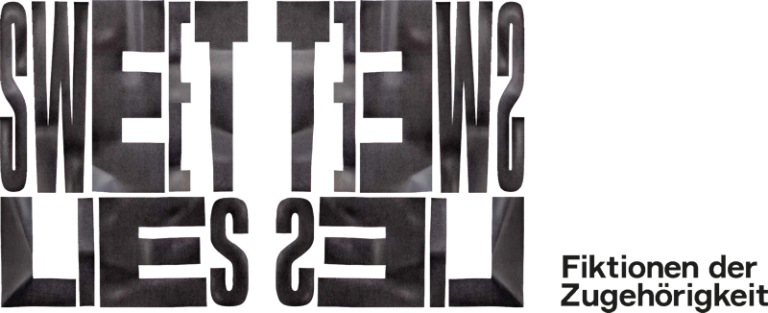Slavs and Tatars
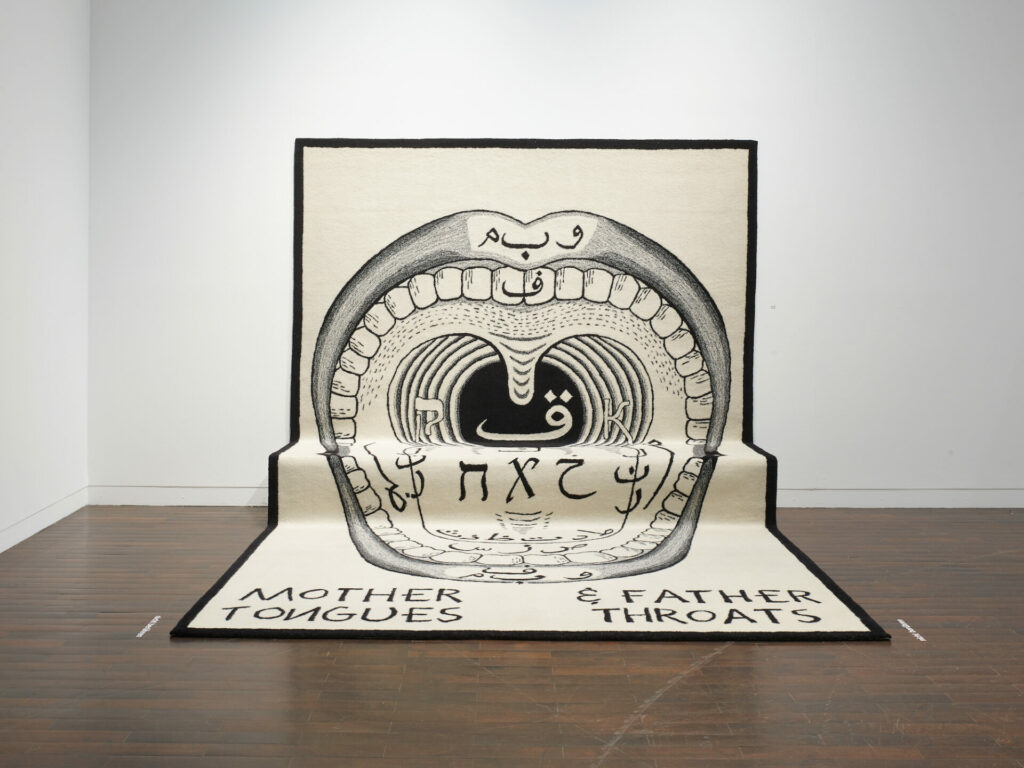
The textile work created by Slavs and Tatars shows on a carpet the Arabic alphabet and associated with it the corresponding sections in the mouth and throat where the sounds are formed. In addition to the Arabic letters, corresponding sounds from Hebrew and Cyrillic (gh, kh) are added. Mother Tounges and Father Throats examines the role of the oral cavity and, on the one hand, highlights the importance of the mouth as an organ of speech; on the other hand, the work suggests that the function of the mouth extends far beyond simple verbalization. A history of ideas is reconstructed by underpinning the cultural and historical significance of these languages when Slavs and Tatars target the importance of the sounds represented to Russian Futurism, Kabbalistic gematria, and Sufi exegesis.
Language as a human product offers an important approach to the work here. But this is almost impossible to decipher for viewers without the appropriate knowledge. Thus, on the one hand, the high significance of language as a means of communication becomes clear, but on the other hand, it is made clear that language – here using the example of foreign languages or non-Latin alphabets – can be as exclusionary as it is inclusive. Slavs and Tatars know how to explore and question the boundaries of the viewers’ visual habits through moments of irritation. As a collective with roots in states of the former USSR, they speak several languages, are familiar with different religions, and have a sense for the interaction between these formative aspects of cultures. Through works like Mother Tounges and Father Throats, they play with expectations and the Global North’s Perspective of culture outside the Eurocentric mainstream. Language can be a driving factor in identity formation, philosopher Kwame Anthony Appiah notes in his publication Identities. Rethinking Identity (p. 110f.), how different population groups within a state defined themselves through their language and not primarily through citizenship. Accordingly, common language creates Belonging to groups. Consequently, a person with multiple language skills has multiple affiliations. The work of Slavs and Tatars plays with this Ambiguity in a humorous way, as the installation invites the viewer to linger in the oversized mouth.
A work that opens itself up to viewers in a similar way is Sergei E. Volkov’s Продолжение осмотра [continued viewing]. Both works confront a language of which viewers in Central Europe are often unfamiliar. Volkov and Slavs and Tatars have in common the use of language in the image, which is carried out in a humorous way and moves within a reflexive framework: we are encouraged to question our perspective – on ourselves and our environment.
in dialogue with
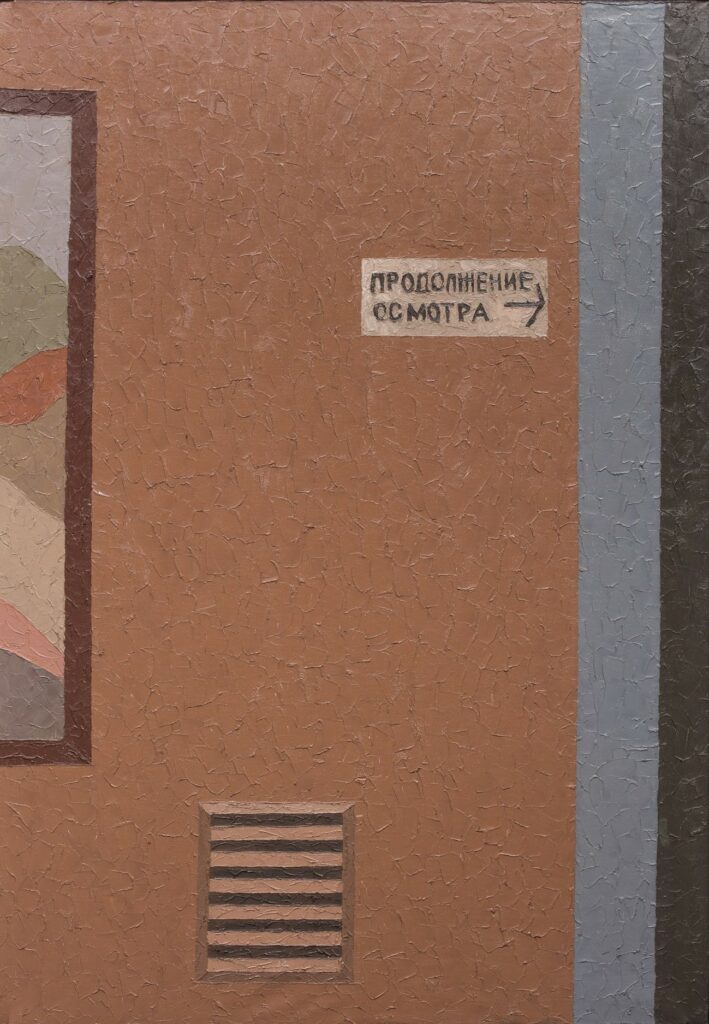
Sergej E. Volkov
Продолжение осмотра, 1988
other articles
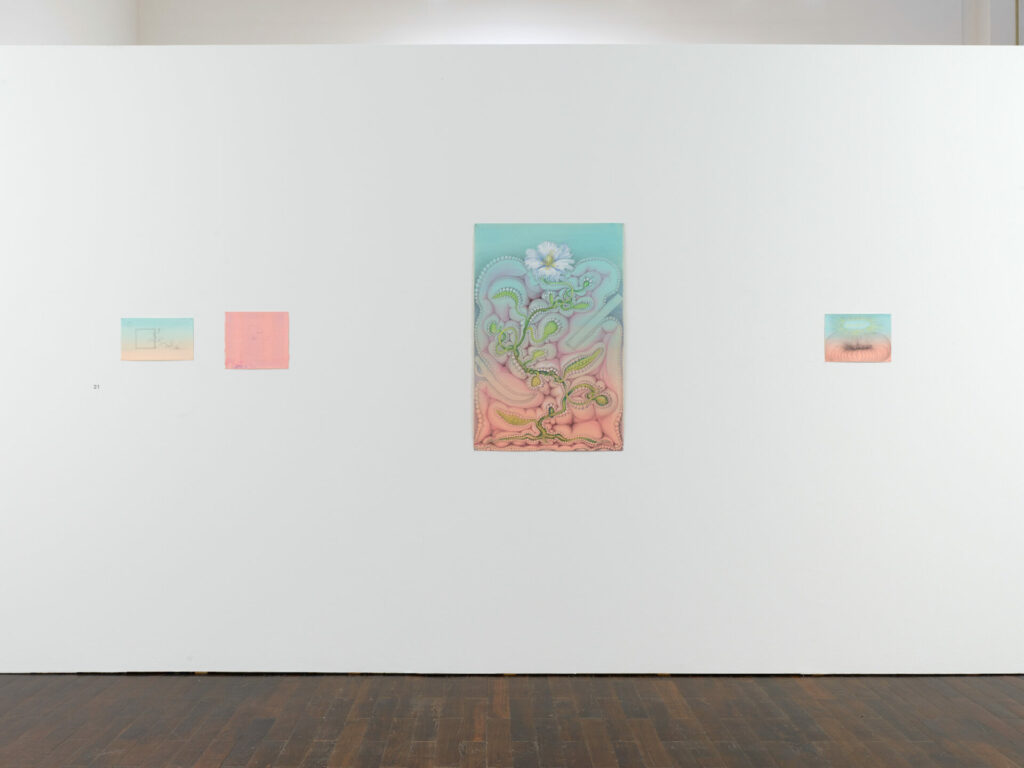
Kinke Kooi
Hold Me 2 / Instanding / Preventing the Sharp from being sharp / Inclusive, Exclusive, 2015
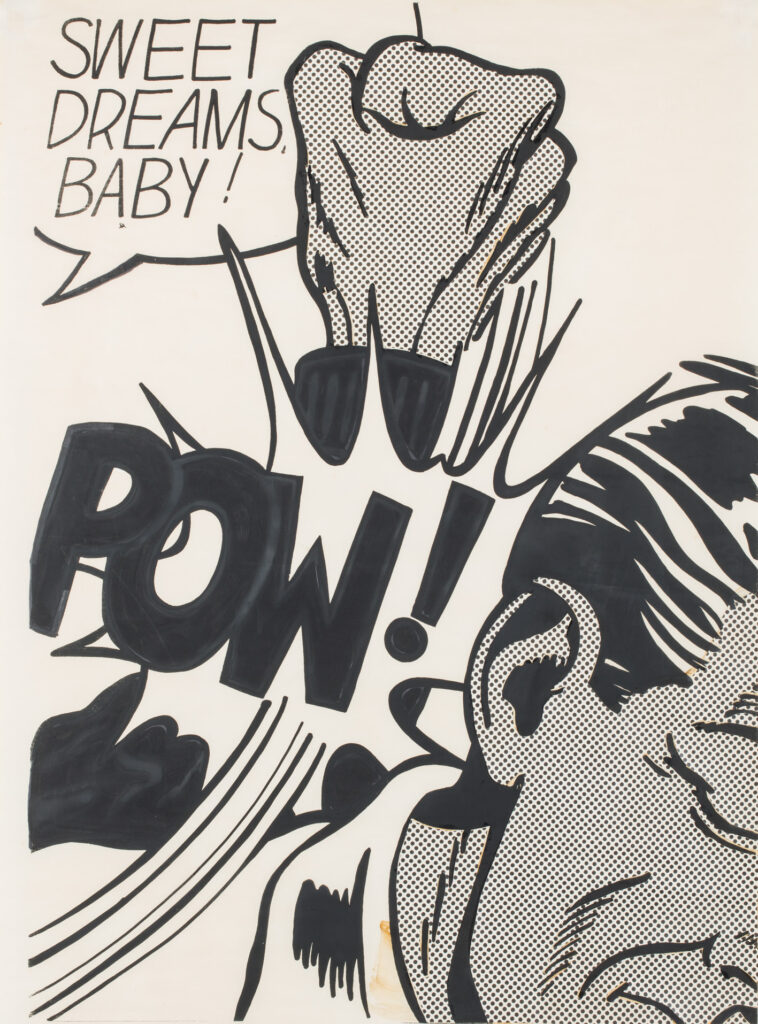
Roy Lichtenstein
Pow!, 1964
